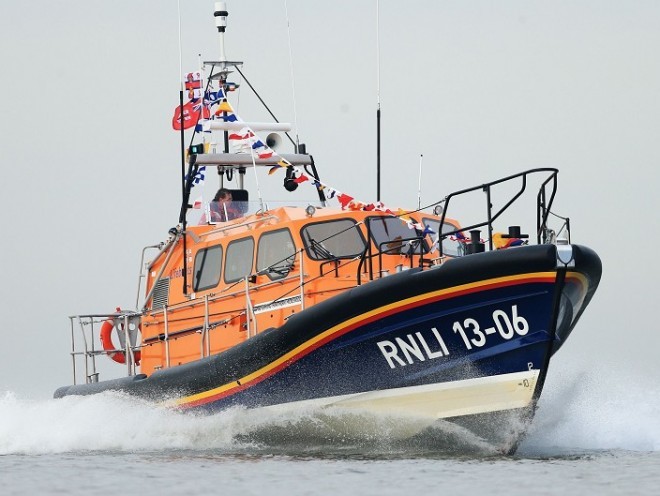Lifeboat crews are being targeted by Facebook hoaxers.
Malicious messages have been sent through the social network to the RNLI over the last week, with the latest one now reported to the police.
On Monday, a message was posted claiming he had spotted a flare being let off from a small boat around nine miles off the village of Sandend.
The poster asked someone else to make the call as he could not get through, even then following up to ask how long it would be as the boat appeared to be “struggling through the tide”.
The account was then deleted. Fraserburgh RNLI did not respond to the call.
But last week, the Buckie RNLI spent three hours scouring the coast after receiving a similar shout.
The crew launched following reports a boat had lost all power off Lossiemouth and needed help.
The message said the only means of communication was social media, but after searching for three hours nothing was found.
Attempts to contact the person who sent the original message failed after it emerged the account it had been sent from was deleted.
Last night, Fraserburgh coxswain Vic Sutherland said he could not understand why people would make these calls.
He said it was “frustrating” for the volunteer crews, and warned of the dangers of these kinds of calls.
Mr Sutherland said: “We were hoping this had faded out.
“If something is ongoing it could be pulling resources away from a real emergency.
“It is putting lives at risk and I cannot understand the kind of kick the people involved get out of it.”
A spokesman from the Marine and Coastguard Agency said information about the latest incident on Monday night has been given to the police.
>> Keep up to date with the latest news with The P&J newsletter
He added: “At 6.15pm we received a report of a flare sighting via Facebook.
“We are treating this report as a false alarm with malicious intent.
“We have informed Police Scotland.”
Last August, the Press and Journal revealed more malicious fake calls were made to the Aberdeen Coastguard base than every other Scottish centre combined.
Official figures showed there had been 50 false alert, malicious intent (FAMI) made to the city operation since 2014.
In June 2018, a hoax mayday radio message sparked a five-hour search involving lifeboats from Buckie, Fraserburgh and Macduff, coastguard teams and a helicopter from Inverness.
The caller claimed three people were abandoning their boat and a recording released by police revealed the culprit called: “mayday, mayday, mayday” and “abandon ship”.
It was later confirmed as a hoax, and police revealed they believed it and two previous malicious calls came from the north Aberdeenshire area.
Last night, police said their inquiries were ongoing and urged anyone with information to contact them on 101.
Sergeant Robbie Williams said: “Officers are carrying out inquiries following a report of a vessel in distress to the coastguard in the Sandend area on Monday.
“Any distress reports to the emergency services will always be taken seriously. Every false or inappropriate call takes up the time of the emergency services and may prevent someone who genuinely needs help from getting it.”
